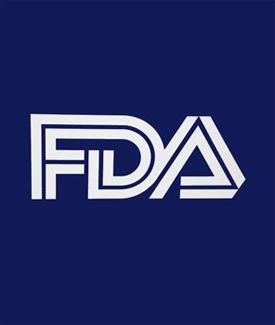FDA Approves Copanlisib for Relapsed Lymphoma
The FDA has approved the novel PI3K inhibitor copanlisib (Aliqopa) for the treatment of relapsed follicular lymphoma in adult patients who have received at least two prior systemic therapies.
The drug is approved for third-line follicular lymphoma

The US Food and Drug Administration (FDA) has approved the novel PI3K inhibitor copanlisib (Aliqopa) for the treatment of relapsed follicular lymphoma in adult patients who have received at least two prior systemic therapies.
“When treating patients with relapsed follicular lymphoma, two factors for physicians involve lessening tumor burden and reducing adverse events (AEs) patients may experience from treatments. Therapies need to be both effective and tolerable,” said Anas Younes, MD, of Memorial Sloan Kettering Cancer Center, New York, in a press release. “The PI3K pathway is activated in many tumor types, including lymphoma, and targeting PI3K therapeutically is a very important strategy in this area of disease. Copanlisib has a safety and efficacy profile that is a welcome advance for both doctors and patients in third-line follicular lymphoma.”
The approval was based on data from CHRONOS-1, a single-arm phase II trial that included follicular lymphoma patients (N = 104) who had relapsed following two or more prior systemic therapies. Patients were treated with 60-mg copanlisib vials on days 1, 8, and 15 of a 28-day treatment cycle on an intermittent schedule until disease progression or unacceptable toxicity. The overall response rate was 59%, with 14% of patients achieving a complete response. Median duration of response was 12.2 months.
The most common AEs (> 20%) associated with copanlisib were decreased strength and energy (36%), diarrhea (36%), hyperglycemia (54%), hypertension (35%), leukopenia (36%), lower respiratory tract infections (21%), nausea (26%), neutropenia (32%), and thrombocytopenia (22%).
Serious AEs were reported in 26% of patients. The most frequent serious AEs were hyperglycemia (5%), pneumonia (8%), and pneumonitis (5%). In 21% of patients, AEs resulted in dose reductions; in 16%, AEs resulted in treatment discontinuation.
The drug is associated with possibly fatal infections, embryo-fetal toxicity, non-infectious pneumonitis, grade 3 hypertension, and grade 3/4 hyperglycemia, neutropenia, and cutaneous reactions.
The FDA has also granted Orphan Drug designation for copanlisib for the treatment of patients with marginal zone lymphoma, with promising data in this setting reported at the 2017 American Association for Cancer Research Annual Meeting.
Highlighting Insights From the Marginal Zone Lymphoma Workshop
Clinicians outline the significance of the MZL Workshop, where a gathering of international experts in the field discussed updates in the disease state.